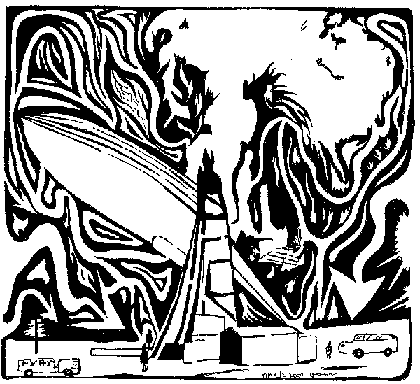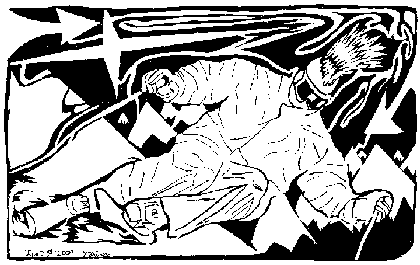About Us Contact Non-monkey mazes? STOM Research Monkey News
Mazes Home - What Is A Maze? - History Of Mazes - How To Solve Any Maze
Mazes >>
The practice of building and solving mazes is centuries old. Archaeological digs in many nations have revealed traces of mazes built by people all over the world, from Latin America to Greece. Going through a maze may have been viewed as a religious experience, or it could simply have been thought of as an exciting challenge. Many mazes were historically made from garden features like hedges, and this continues to be the case.
A maze should not be confused with a labyrinth. A labyrinth is a similar structure, but it has a path which is clear and easy to follow. The goal of a labyrinth is to induce contemplation and thought by guiding a walker through it. Labyrinths also have a long history, and continue to be used in religious ceremonies. The twistings and turnings of a labyrinth are carefully mapped out, and sometimes send a message when viewed from above.
A three dimensional maze can be built from almost anything. In gardens, hedges, trees, and plants are used to make garden mazes of varying sizes and heights. In many cases, a garden maze is low, allowing people to see out of it. Brick, stone, wood, and other materials can also be used to create a maze. In both cases, the path of the maze is usually laid out on the ground beforehand, using a pattern drawn out on paper and then enlarged.
In some parts of the world, going through a seasonal maize maze is a tradition. A maize maze
is made from maize, or corn, an excellent crop for making mazes with
since it grows quickly and achieves great height. In areas of large
corn production, a
maize maze may be built as a summer and early
fall treat, and it is often paired with other activities such as
pumpkin carving.
The first recorded maze in history was the Egyptian Labyrinth. Herodotus, a Greek traveler and writer, visited the Egyptian Labyrinth in the 5th century, BC. The building was located just above Lake Moeris and opposite the city of the crocodiles (Crocodilopolis). Herodotus was very impressed by it, stating, "I found it greater than words could tell, for although the temple at Ephesus and that at Samos are celebrated works, yet all the works and buildings of the Greeks put together would certainly be inferior to this labyrinth as regards labor and expense." Herodotus added that even the pyramids were surpassed by the Egyptian Labyrinth.
Herodotus was told that the land of Egypt had been divided into twelve kingdoms, or nomes, each ruled by a king. The kings had come together to leave a memorial of themselves through this temple which was called Arsinoë, which means "the temple at the entrance of the lake." The entire building was surrounded by a wall and contained 12 courts with 3,000 chambers. The roof of the temple was composed of stone and the walls were covered with sculpture. On one side of the labyrinth was a pyramid 243 feet high. The temple was in two levels with half of the rooms above ground and the rest below. Herodotus was guided through the upper part of the labyrinth, but was not permitted to go underground. He was told that the rooms below contained the bodies of the kings that constructed the temple and the tombs of sacred crocodiles.
The ancient writer Pliny in his book "Natural History," written in the first century AD, also talks a little about this labyrinth. He noted that the labyrinth contained palaces and temples to all the gods of Egypt as well as "banquet halls reached by steep ascents, flights of ninety steps leading down from the porticoes, porphyritic columns, figures of gods and hideous monsters, and statues of kings." Pliny goes on to say, "Some of the palaces are so made that the opening of a door makes a terrifying sound as of thunder. Most of the buildings are in total darkness."
Safed, Israel














